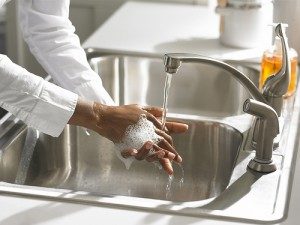Hand Washing and Food Safety: The Essential Shield
In the ongoing battle against foodborne illnesses, the simple act of hand washing transcends being a mere good practice—it is an essential regulatory requirement. This fundamental hygiene practice forms the backbone of food safety measures across various sectors of the food industry. Its importance is highlighted not just in the realm of personal health and hygiene but also in the stringent regulations that govern food production and handling in the United States.
The Regulatory Frameworks
The regulatory frameworks, including the Produce Safety Rule (21 CFR 112), Preventive Controls for Human Foods (21 CFR 117), and Preventive Controls for Animal Foods (21 CFR 507), reflect a comprehensive approach to hand hygiene. These regulations, while differing in specifics, converge on the common goal of ensuring that all individuals involved in the food production and handling chain maintain the highest standards of hand cleanliness. The rules cover various aspects, such as the availability of hand-washing facilities, the use of appropriate cleaning agents, and the implementation of consistent hand-washing practices.
The Importance of Compliance
Compliance with hand hygiene regulations is crucial in the battle against foodborne illnesses, extending far beyond mere adherence to legal requirements. These regulations are designed to create a systematic approach to prevent the spread of pathogens in food handling and production environments. Foodborne pathogens, such as bacteria, viruses, and parasites, can easily transfer from unwashed hands to food items, leading to a range of illnesses that can range from mild discomfort to severe health complications.
Five Steps to Effective Handwashing
- Wet your hands with clean, running water (warm or cold), turn off the tap, and apply soap.
- Lather your hands by rubbing them together with the soap. Pay attention to the backs of your hands, between your fingers, and under your nails.
- Scrub your hands for at least 20 seconds. Need a timer? Hum the “Happy Birthday” song from beginning to end twice.
- Rinse your hands well under clean, running water.
- Dry your hands using a clean towel or air dry them.
Why, When, and How to Wash Hands
- Before, during, and after preparing any food: Your hands carry germs you can’t see, and these germs can be introduced to your food while you are preparing it.
- After handling uncooked meat, chicken, or other poultry, seafood, flour, or eggs: Prevent cross-contamination.
- Before and after using gloves: Prevent germs from spreading to your food and your hands.
- Before eating: Keep germs off your food.
- After touching garbage, wiping counters, or cleaning other surfaces with chemicals: Maintain cleanliness.
- After touching pets, pet food, or pet treats: Avoid contamination.
- After coughing, sneezing, or blowing your nose: Prevent germ transmission.
Conclusion
Handwashing is not just a routine—it’s a powerful shield against foodborne illnesses. By adhering to hand hygiene regulations, individuals and organizations in the food industry play a crucial role in protecting consumers from the risks associated with foodborne pathogens. Let’s make handwashing a healthy habit while preparing food for ourselves and our loved ones! 🌟🍽️




